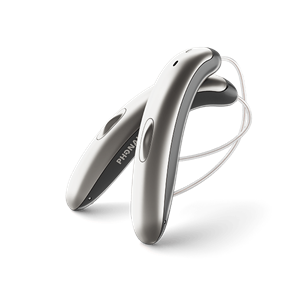Diplacusis: Causes and Treatment | Connect Hearing

Diplacusis: Causes and Treatment | Connect Hearing
10 min.
Publication Date: August 20, 2019
Although as humans, we are highly visual creatures, we rely on our auditory system for various reasons. We depend on our hearing to communicate, listen to music, stay socially active, and more. Our dependence on our sense of hearing explains why experiencing hearing loss can be more socially debilitating than blindness.
What is Diplacusis?
Diplacusis is also known as double hearing. It is a form of hearing loss when you hear the same sound differently in each ear. Your brain interprets the sounds you hear. When you suffer from double hearing, you hear two separate sounds with a different pitch, timing, or tone.
Living with the condition is highly frustrating and irritating to most. While for some people it is only temporary, for others it is permanent. Depending on your pitch perception, you can have various types of diplacusis, such as:
What Causes Diplacusis?
The causes of the condition aren’t entirely understood. Experts believe that diplacusis can occur with both, unilateral and bilateral hearing loss. Unilateral hearing loss affects one ear only, bilateral affects both. For example, diplacusis can arise when you lose some of your hearing in one ear only. It can also occur when the degree of hearing loss is greater in one ear than the other.
Damage to the Inner Ear
Most often, diplacusis starts suddenly. Factors that can cause ear damage are noise-induced hearing loss, head trauma, and specific medications. Many people notice their symptoms starting after some acoustic trauma. An explosion or exposure to some other form of loud noise can be traumatizing to your ears.
Drugs that can damage your hearing are called ototoxic. More than 200 ototoxic medications are on the market today. Some of these are used to treat severe conditions, such as infections, heart disease, and even cancer.
Obstruction in the Inner Ear
Obstructed ear cavity can also be at the root of your problems. A bad ear infection or sinus congestion can diminish your normal hearing. Excess earwax or tumor can also lead to the development of diplacusis.
How to Treat Diplacusis?
Make an appointment with a hearing specialist, as soon as your symptoms develop. Any suspicion of hearing loss should be promptly evaluated. Your doctor will perform a complete medical and audiological exam to try to find the root cause of your problems.
The best treatment for your symptoms depends on the underlying cause. If an obstruction in your ear cavities causes your symptoms, figuring out the reason for it is essential. The good news here is that you will likely regain your hearing once your ears get unclogged again.
Removing wax build-up or treating your ear infection should be the focus of your treatment.
Your doctor may decide to perform a pitch-matching test. This test is designed to assess the characteristics of your diplacusis. This diagnostic tool is beneficial to gain some insight into what you are experiencing.
In certain situations, the cause of your diplacusis cannot be cured. In this scenario, it is crucial to understand your condition and the best ways to cope with it.
Author
Connect Hearing Canada



